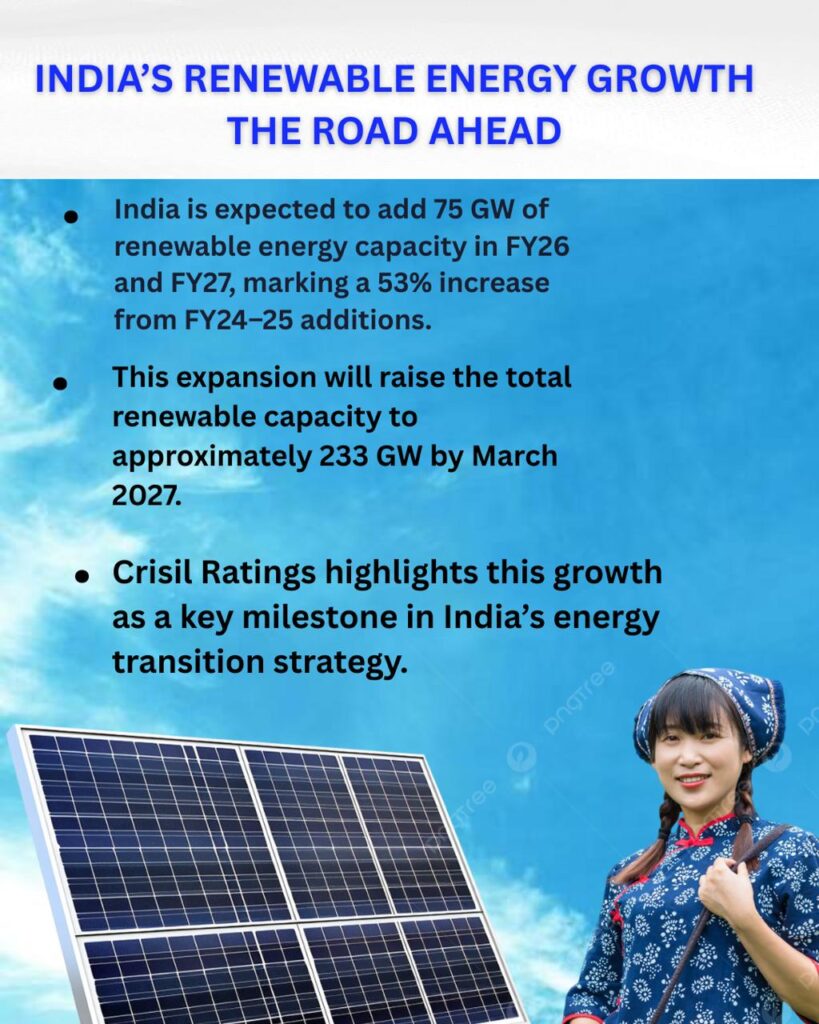India is one of the sunniest countries in the world, with over 300 sunny days a year, making it ideal for solar power generation. With increasing energy demands, pollution concerns, and a commitment to the Paris Agreement, India is rapidly shifting toward clean and renewable sources — and solar is leading the way.
📈 Current Status & Government Goals
As of 2024, India has installed over 73 GW of solar capacity (source: MNRE).
The government aims to reach 280 GW of solar power by 2030.
Major initiatives like PM-KUSUM and Rooftop Solar Subsidy Programs support farmers and homeowners to adopt solar systems.
Solar parks, floating solar, and hybrid (solar + wind) projects are expanding across the country.
🔮 Future Trends
Rooftop Solar Boom – Especially in urban and semi-urban areas.
Solar for Agriculture – Solar pumps and cold storage units for farmers.
Green Hydrogen – Using solar energy to produce clean hydrogen fuel.
Storage Solutions – Better battery technology will support 24×7 solar power.
Private Sector Growth – Companies like Adani, Tata Power, and ReNew Power are investing billions in solar infrastructure.
✅ Benefits for India
Reduces dependency on fossil fuels
Creates jobs in manufacturing, installation, and maintenance
Helps fight climate change
Makes energy affordable and accessible, even in remote villages



